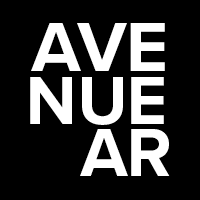Branding at its best
The First Step To Building Your Personal Brand
Sure, everyone knows what a brand is. Coke, Pepsi, McDonald’s. But that buzzword is getting thrown around a whole lot in career and job search conversations these days, too. And you might be thinking to yourself, “why do I really have to care about this?”
Here’s why: Whether you’re on the job hunt, a student, or gainfully employed, you must think, act, and plan like a business leader. With the surge of social media, you have not only the ability, but you now have the need to manage your own reputation, both online and in real life.
Employers will Google you before they even invite you to an interview. (Your current employer probably has an eye on what you’re doing, too.) And when you interact with people, both online and offline, they’ll build up an image of who you are over time.
And here’s where you come in: You want to be in control of all of those impressions. Why leave your professional reputation to chance, when you can be your own PR guru and manage your image?
Your personal brand is all about who you are and what you want to be known for. And while that’s a pretty broad concept, I’m going to break down the process for building your brand into a few easy steps, which we’ll cover over the next few weeks.
Your first task: Developing your “brand mantra.” Basically, this is the “heart and soul” of your brand, according to branding expert Kevin Keller. It’s the foundation of all of your branding efforts.
Make a list of words that best describe these features of your personality. These words are known as emotional modifiers. Hint: They can be as simple as Disney’s “fun.”
Questions to Consider:
- How do I make people feel?
- How do people benefit by working with me?
- What words do others use to describe me?
2. Determine Your Description
Your next step is coming up with a descriptive modifier that brings clarity to the emotional modifier, identifying what or who your brand is for. In Disney’s case, it’s “family.” In Nike’s mantra, “authentic athletic performance,” “authentic” is the emotional appeal, while “athletic” tells you what the brand is for. As an individual, yours might be an industry (“healthcare” or “education”), or it might be a tangible skill (“creative” or “strategic”).
Questions to Consider:
- What field or industry am I in (or do I want to be in)?
- What are the words I would use to describe my work?
- Who is my target audience?
3. Determine Your Function
Lastly, write down what, exactly, you do (or will do). It might be something that directly relates to your career: writing, graphic design, or financial planning, for example. Or, it might be something more broad, like Disney’s “entertainment.” Are you a manager, a creator, an organizer? A connector of people?
Questions to Consider:
- What service do I have to offer people?
- What do I do that makes me stand out from everyone else?
4. Put it All Together
Finally, look at your three lists of words, and see how you can combine them into a short sentence or phrase—no more than five words. Your brand mantra should communicate clearly who you are, it should be simple and memorable, and it should feel inspiring to you. You might be a “dependable, strategic planner” or “a creative professional connector.” Or, your mantra might be something like, “motivating others to do their best.”
Now—what do you do with this statement? Check back soon for tips on how to use your mantra and build your online brand, as well as how to live your brand, every day.
This article was originally posted on The Daily Muse. For more on the best ways to market yourself, check out:
- Video Pick: How Successful People Sell Themselves
- Perfect Pitch: How to Nail Your Elevator Speech
- Stand Out for Success: The Secrets of Self-Promotion
-The Muse
